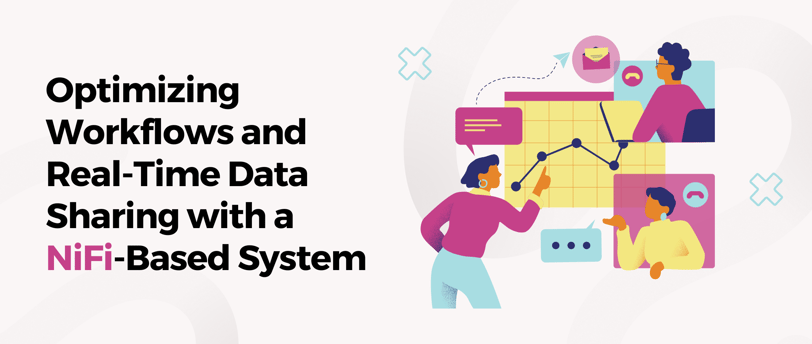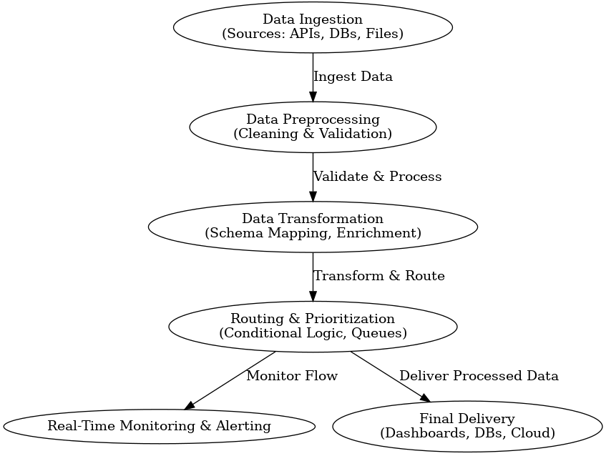Optimizing Workflows and Real-Time Data Sharing with a NiFi-Based System
Chithralekha Rajeev
2/2/20212 min read


Efficient collaboration among distributed teams is crucial for the success of any project. Delays in data sharing, inconsistent workflows, and lack of real-time updates can hinder progress and decision-making. To address these challenges, a system utilizing Apache NiFi can be developed to facilitate seamless, real-time data exchange and optimize workflows across teams
The Objective
The goal is to design a robust data transfer system that ensures:
Real-time data sharing across teams working in different time zones.
Workflow optimization by automating data handling processes.
Centralized visibility of data for monitoring and decision-making.
The Approach
1. Defining the Data Flow
The system would handle multiple types of data—task updates, backlog information, resource dependencies, and status changes—from various tools and sources. Data ingestion, transformation, and routing are key elements of this flow.
Data Ingestion
Gather data from tools like project management systems, shared file systems, and databases.
NiFi’s processors like GetJira, GetFile, and ConsumeKafka will ingest data in real-time or at scheduled intervals.
Data Transformation
Ensure consistency across all datasets. For instance, backlog updates from JIRA might need to be reformatted to match the schema required by a centralized database or reporting system.
Use processors such as UpdateAttribute and ReplaceText to clean and standardize data.
Data Routing
Direct data to relevant destinations based on workflow rules. For example:
Task updates go to the development team.
Status reports are routed to managers.
Implement conditional routing using RouteOnAttribute or EvaluateJsonPath.
2. Creating Real-Time Data Updates
NiFi’s flexibility allows integration with communication tools like Slack or email to notify teams of critical updates:
A newly created task in JIRA can trigger an alert to the appropriate team.
Milestone completions can prompt automated status emails.
3. Centralized Data Consolidation
A central repository is established to maintain a unified view of all data:
Use processors like PutSQL to store updates in relational databases.
PutS3Object can be used for archiving data on cloud storage.
4. Monitoring and Error Handling
Leverage NiFi's built-in monitoring dashboard to track data flows.
Configure alerts for failed or delayed processes, ensuring timely error resolution.
Automatically retry failed operations without disrupting the workflow.
Workflow Example
Scenario: Managing Task Updates Across Teams
A team member updates a task in JIRA.
NiFi detects the update via the GetJira processor.
The data is transformed to match the schema of the central database using UpdateAttribute.
The transformed data is routed:
To Slack for team notifications (PutSlack).
To a database for historical tracking (PutSQL).
Alerts are triggered for tasks nearing deadlines using conditional routing rules.
The flow is monitored in real-time via NiFi's UI, ensuring smooth operations.
Outcomes
Seamless Collaboration
Teams access real-time updates without manual intervention, minimizing delays and improving workflow alignment.Optimized Workflows
Automated data transformations and routing eliminate bottlenecks and reduce errors, allowing teams to focus on core tasks.Actionable Insights
Centralized data storage facilitates easy reporting and analytics, enabling informed decision-making.Scalability and Flexibility
The system can be easily extended to accommodate additional data sources or new teams without disrupting existing workflows.
Conclusion
By leveraging Apache NiFi, it is possible to design a dynamic and efficient data transfer system that transforms how teams collaborate. With real-time data sharing, automated workflows, and robust monitoring, such a system not only enhances productivity but also ensures timely delivery of milestones.


